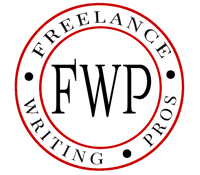
While there’s no bad time to raise your freelance writing rates, the start of a new year is a great time to consider it. After all, you have more experience now. You’ve gotten to know your clients’ businesses better. You have more examples to showcase your expertise. Don’t you deserve a raise?
Normally, I prefer to raise rates near the end of the year because it allows me to give clients notice while some are still working out their next year’s budgets. But not everyone operates on that schedule, and admittedly I was late this time around, raising rates this week instead.
I get it. When you want to raise your freelance writing rates, you run the risk of scaring away some clients, including ones you love working with. It can be anxiety-inducing.
Over the years, I’ve taken a simple three-step approach to raising rates that’s eased the process, both for me and my clients. Here’s what it looks like:
1. Assess Current Client Relationships
While freelance writers often quote rates on a per-project basis, remember that what matters most is your hourly earnings. A $300 blog post written in a couple of hours is more lucrative than a $1000 article you spend a week or more on.
So don’t get overly hung up on project rates when thinking about current working relationships.
Start by deciding how much you want to earn per hour (which will be the basis of any new project rates you set). My freelance hourly rate calculator at All Freelance Writing can help if you’re not sure where to start.
Then ask yourself how much you average per-hour working with each of your regular or repeat clients.
If you already meet or exceed your hourly target with a particular client, you might not want to raise rates and risk losing them. Or you might put forward a more modest increase (because, after all, you still increased your value to the client as you became more familiar with, and involved with, their business or publication).
For those clients whose current rate structure doesn’t meet your new hourly target, it’s time to make some changes.
2. Adjust Rates for Existing Clients
Rate increases for existing clients do not necessarily have to match your new base rates for new clients. You can increase these on a case-by-case basis in an effort to weed out clients you’d rather not continue with and find a way to get existing clients up to your new hourly minimum.
What I don’t recommend is springing sudden, and drastic, rate changes on clients if you hope to keep them. Instead, give them plenty of advanced notice, such as with a rate increase letter. I like to give them at least a month or two at their current rate.
This way it leaves them time to figure out budget adjustments, we can negotiate a change in scope that works for us, or we can agree to part ways at a future time with them having time to find a replacement and me having time to set up contracts with other clients.
You could even try a tiered approach if your rate increases are significant, increasing their fees in increments that get you to your new target over six months or a year. It all depends on how badly you want to hold onto that client versus replacing them.
3. Raise Rates on All New Clients
The next thing I do when I want to raise my freelance writing rates is the easiest step. Raise rates on all new clients.
This, for me at least, is as simple as updating my website with my new rates. While I wholeheartedly recommend publishing your freelance writing rates, if you insist on not doing that, then you would just use your new rates when privately quoting new prospects.
You should get a feel quickly for how prospects will react to your new rates. In my experience, as long as your experience or credentials back them up, it’s not an issue.
That said, you might sometimes price yourself out of your market.
That doesn’t mean you shouldn’t raise your rates. It just complicates things a bit in that you’ll need to make target market adjustments as well – targeting larger publications, taking on different types of projects, working with different verticals (like an SEO content writer focusing on more professional markets like law firms and doctors’ offices than other types of small businesses).
If that doesn’t appeal to you, you always have the option to re-adjust your rates and offered services as you see fit. There are even times it makes sense to lower your rates. It shouldn’t take long to settle into a new balance.
Are you planning to raise your freelance writing rates this year? Have you already? I’d love to hear how you went about it, how smooth (or rocky) the process was, and how often you reassess your rates.

I’ve followed a similar strategy over the years, Jenn. This is a good reminder to revisit my rates this year.
You absolutely deserve a raise Sharon!